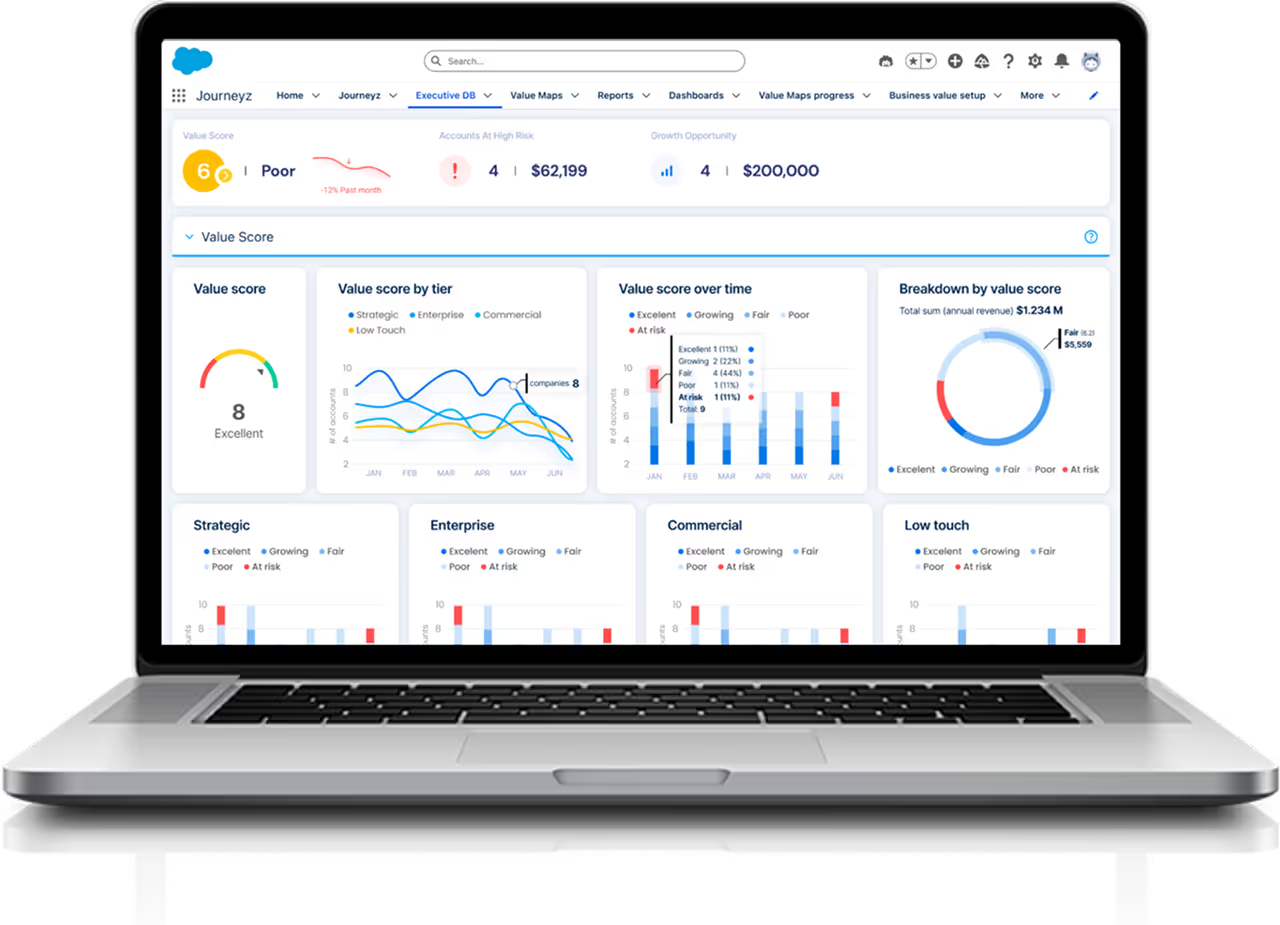Prompt Engineering for Customer Success: The New Core Skill Every Team Needs


AI is finding its place in nearly every part of the customer lifecycle, and even customer success is no exception. From onboarding playbooks and renewal strategies to automated health summaries and QBR prep, generative AI is starting to reshape how CS teams operate.
But there's one thing that determines how useful these tools really are: the quality of the prompt.
According to the State of AI in Customer Success Report by Gainsight, 52% of CS organizations are already using AI. Yet most teams lack the internal readiness to fully leverage it. That gap isn't about technology. It's about the skill set.
Much like how CRM hygiene or playbook design once defined CS excellence, Prompt Engineering for Customer Success is quickly becoming the key to unlocking meaningful value from GenAI. It's how CS professionals move from generic automation to actionable, personalized insight delivered faster, with greater precision, and with more impact.
What is Prompt Engineering and Why Does It Matter?
To put it simply, prompt engineering refers to the process of creating clear and structured content through AI systems. It is generally done using context-rich instructions. Basically, the goal is to guide the model to produce relevant, accurate, and useful outputs that match your objective.
Think of it as setting a brief for a team member: the more specific, contextual, and goal-driven you are, the better the result. A vague prompt like “write a QBR summary” may return something broad and unusable. But a structured prompt such as “summarize key adoption milestones and renewal risks for this enterprise customer in three bullet points, using usage data from the last 90 days” gives the AI a clear path forward.
A vague prompt like "write a QBR summary" may return something broad and unusable.
Or when you give a prompt with structure like “summarize key adoption milestones and renewal risks for this enterprise customer in three bullet points, using data from the last 90 days”. You’re telling the AI what to do.
In customer success, where timing, tone, and customer context are everything, prompting is a multiplier.
Done well, it allows teams to surface insights, prep work, and scale consistency of messaging - all without losing the human touch that’s what makes CS work.
Why Customer Success Teams Can’t Rely on Default Settings
Most CS tools now include embedded AI features. Some auto-generate lifecycle emails, some summarize health scores, or extract sentiment trends. But these defaults are just that-defaults. They rarely account for your specific segments, playbooks, or stakeholder expectations.
Every company has its own risk signals, product usage markers, and advocacy triggers. And every CS team tailors its strategy based on deal size, renewal velocity, or product complexity.
Prompt engineering gives teams control over how AI interprets that complexity. Without intentional prompt design for CSMs, teams are stuck with surface-level automation that can’t adapt to nuance.
This becomes especially important in high-touch accounts. A templated summary won’t satisfy a VP of Operations expecting a strategic discussion. An AI-generated adoption overview that misses a key stakeholder’s disengagement can erode trust.
Prompt engineering for customer success helps CS professionals bridge that gap by translating domain knowledge into AI instructions that reflect customer context, business value, and success outcomes.
4 Examples of AI Prompts for Customer Success
To see how this plays out, let’s look at four common use cases where well-crafted prompts unlock high-impact outputs.
1. QBR Preparation
Prompt: “Summarize key feature adoption trends for this customer since the last QBR. Highlight improvements, usage gaps, and any support tickets that may require follow-up.”
This helps CSMs quickly frame a narrative while staying rooted in customer behavior.
2. Post-Onboarding Summary
Prompt: “Write a customer-facing recap of onboarding completion. Mention key achievements, next steps, and how these map to the success plan shared in the kickoff.”
This helps scale personalization while reinforcing strategic alignment early on.
3. Expansion Opportunity Brief
Prompt: “List three potential upsell opportunities for this customer based on current usage patterns and cross-product engagement.”
A prompt like this helps CS and Sales collaborate more effectively with AI, suggesting relevant angles for expansion.
4. Renewal Risk Alert
Prompt: “Based on recent activity, sentiment, and support trends, assess if this account shows any signs of renewal risk. Include possible causes and a recommended next step.”
This enables proactive intervention by surfacing at-risk accounts before they escalate.
These aren’t just automations, they’re building blocks. When reused and refined, they become part of your CS toolkit: repeatable, scalable, and contextual.
It’s a great example of how AI prompting in customer success can drive efficiency without losing relevance.
The Limitations of Prompting
Prompt engineering is a valuable tool for customer success teams. It can help streamline repetitive tasks, personalize communication, and support day-to-day efficiency. But there are clear limits to what prompts can do on their own.
Prompts work best when the input is narrow and well-defined. They can summarize a call, draft a follow-up, or highlight usage trends. What they can’t do is continuously track how a customer’s business objectives evolve, correlate those goals with product behavior, or benchmark value delivery across hundreds of accounts.
These kinds of insights require a deeper AI layer that integrates with multiple data sources, identifies patterns over time, and connects signals across the full customer journey.
Put simply, prompts can help ask better questions. But guiding strategic action at scale requires more than a well-worded input. It requires systems built for depth, not just speed.
That’s why prompt design for CSMs works best as a starting point, not the whole solution.
From Passive User to Active Designer
One of the biggest mindset shifts prompted by engineering is moving from passive AI use to active design.
Instead of accepting whatever output the system generates, CSMs learn to shape it. They define the purpose, refine the input, and evaluate the result. They don’t just use the technology-they guide it.
This is similar to what happened when health scores first emerged. Early CS teams didn’t just look at the score. They asked what data contributed to it, what it missed, and how to customize it. Prompting invites that same level of engagement and control, something we’re now seeing more of with customer success prompt engineering.
It also reinforces accountability. If a QBR deck falls flat because of a vague AI summary, the issue likely isn’t the AI-it’s the prompt. Owning the interaction means owning the quality of the outcome.
Building Prompt Engineering Skills
The good news? Prompt engineering isn’t a technical skill. It’s a communication skill. It builds on what CS professionals already do well: translating between customer context and internal systems, summarizing key takeaways, and prioritizing based on objectives.
Teams can build this capability through practical, low-friction steps:
- Practice prompts during recurring workflows (e.g. onboarding wrap-ups, QBR prep, risk notes)
- Review AI outputs in team meetings to refine clarity
- Share successful prompt templates in a centralized library
- Create a feedback loop with RevOps or CS Ops to tune data inputs
These steps are a natural extension of customer success prompt engineering, built into daily routines like onboarding wrap-ups, QBR prep, or risk notes. In fact, this doesn’t require extra time-it becomes part of how work gets done. And like any CS playbook, the more it’s used, the better it gets.
Prompt Engineering and the Broader Shift in CS Skills
Prompting isn’t a one-off tactic. It reflects a deeper shift in how CS teams interact with technology.
Traditional CS strengths like empathy, planning, and communication are now joined by new capabilities: guiding AI, validating insights, and customizing output at scale. These are the skills that will define top-performing teams in the coming years.
In this new environment, CSMs are expected to be more than account stewards. They’re insight generators, value storytellers, and signal translators. Prompt engineering equips them to work side by side with AI-using it not just for automation, but to accelerate strategic impact.
This evolution highlights the growing importance of customer success prompt engineering as a core capability for modern CS teams.
Final Word: Prompting Is the Interface of the Future
Prompt engineering is becoming the new interface between humans and AI. It’s how CSMs extract relevant insight, drive consistency, and scale personalization, without losing the nuance that defines excellent customer engagement.
As customer success becomes more data-driven and AI-supported, the ability to write a good prompt will be just as critical as writing a good email or building a solid success plan.
That’s why prompt engineering for customer success is quickly becoming a must-have skill, not just a nice-to-have advantage.
It’s not about replacing relationships with machines. It’s about using machines to strengthen relationships with more clarity, more focus, and more confidence.
FAQs For Prompt Engineering for Customer Success
1. What is prompt engineering in customer success?
Prompt engineering in customer success is the practice of crafting clear, structured instructions to guide AI tools in generating relevant, useful outputs for tasks like onboarding recaps, QBRs, renewal planning, and more.
2. Why do CSMs need to learn prompt engineering?
Effective prompting allows CSMs to shape AI outputs for their specific customer segments, playbooks, and business goals, leading to more accurate, personalized, and strategic insights.
3. Do you need technical skills to use prompt engineering in CS?
No. Prompt engineering is about communication, not code. It builds on existing CS strengths like context-setting, summarization, and customer storytelling.
4. What are examples of AI prompts for customer success?
Prompts can be used for QBR preparation, post-onboarding summaries, renewal risk alerts, or identifying expansion opportunities tailored to drive better results and save time.
5. How do CS teams build prompt engineering skills?
Teams can start by practicing on real workflows, reviewing outputs collaboratively, creating shared prompt libraries, and integrating prompting into routine CS activities.
Ready to Start your Journeyz?
Transform your customer retention and expansion strategies with the industry’s first Customer Value Platform.

.svg)


.svg)
.webp)




